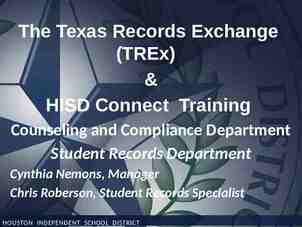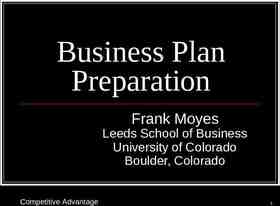The Past, Present and Future of ECommerce Marketing E-Commerce
20 Slides391.00 KB

The Past, Present and Future of ECommerce Marketing E-Commerce

What is E-Commerce? E-Commerce can be defined as The conduct of selling, buying, logistics, or other organization-management issues via the WEB. OR Technology mediated exchanges between parties (individuals and/or organizations) as well as the electronically based intra- or interorganizational activities that facilitate such exchanges.

Growth of E-Commerce 2002 1st Q 743.8B 2000 28.91B 1996 700M 2001 35.87B 2002est 51.48B

History of E-Commerce Background E-commerce actually began in the 1970s when larger corporations started creating private networks to share information with business partners and suppliers. This process, called Electronic Data Interchange (EDI), transmitted standardized data that streamlined the procurement process between businesses, so that paperwork and human intervention were nearly eliminated. EDI is still in place, and is so effective at reducing costs and improving efficiency that an estimated 95% of Fortune 1,000 companies use it.

History of E-Commerce Prodigy was running text ads and selling flowers in the early '80s The first documented Online sale in 1994 was what? A CD

History of E-Commerce Early EC was pioneered by Internet companies that didn't (and still don't) perform traditional retail. Called Pure Plays. – such as Amazon.com and CDNow. More recently click and mortar stores have moved online – like Barnes and Noble, Best Buy, the Gap, and Wal-Mart

History of E-Commerce: Amazon.com Early in 1994, working for D.E. Shaw in New York City, Jeff Bezos, a restless, 30-year-old hedge fund manager began researching the commercial possibilities of the Net. A year later, Bezos drove west, raising venture funds for a new small online book shop (originally called Cadabra.com), to be launched from his garage in Bellevue, Wash. Running on a Website and a warehouse, by its third year Bezos's precocious Amazon.com toppled 150 million in annual sales — a milestone that Wal-Mart founder Sam Walton needed 12 years (and 78 stores) to reach.

History of E-Commerce: Stocks Electronic stock trading debuted 30 years ago with Instinet, Reuters' computer network that allowed after-hours trading. – Charles Schwab first offered a dial-up trading service called The Equalizer in 1985. – E*Trade founded in 1982 as an institutional trading service began offering consumer trading in 1992 through America Online and CompuServe. True Web-based trading arrived in 1994 with Chicagobased NET Investor, which offered 15-minute delayed quotes and charged 35 per trade. Ameritrade, Datek Online, and others followed, eventually driving commissions to as low as 8 per trade, and forcing the implementation of free, real-time stock quotes in 1998.

History of E-Commerce: Ads In 1994, the first national consumer brand site www.zima.com - was launched for the Coor's owned beverage Zima. In October of 1994, Wired magazine's HotWired, dished up the first banner ads from 12 advertisers, including AT&T, Club Med, and Volvo. Sales for the entire online ad industry were 1 million that year, and HotWired owned 40 percent of it. In 1998, online ad revenues reached 2 billion, topping the 1.6 billion spent on "outside" ads, such as billboards. General Motors alone pumped in 12.7 million. Online ad revenue is expected to reach 11.5 billion by 2003 that’s 5 percent of the total U.S. ad market.

History of E-Commerce: Travel Booking a trip over the Web back in 1995 meant going to a travel site and requesting a fare. In early 1997, Travelocity offered a paging service to its Web customers that alerted them if their flight was delayed. In the fall of 1997, Priceline.com launched its innovative, bid-based market for discount airfares. Today you can bid on empty seats, name your price, choose a seat from a diagram, and know of fare bargains often before agents have that information.

EC Advantages/Disadvantages EC Advantages – Ability to reach new markets – Reduces costs (for some businesses) – Increased purchasing opportunities – More efficient (electronic payments, telecommuting, etc.)

EC Advantages/Disadvantages EC Disadvantages – Incompatibility for certain industries – Limitations of the medium – Costs!!! – Skills required – Cultural and legal issues

Selling on the Web Selling goods and services – Catalogs on the Web (e.g., Dell, LLBean) – Digital content (LexisNexis, mp3 sites?) Advertising supported – Make via advertising (like TV) – Difficult to measure, gauge support, attract repeat visitors – Examples: Yahoo, news sites, other portals

Selling on the Web Combined Advertising/Subscription – Fee advertising – NY Times, Wall St Journal, Reuters, ESPN Fee for Transaction – Travel sites – eBay – Stock sites? (some of ‘em )

Bus. To Bus. EC Purchasing activities – Procurement can be a major activity – Business/Supplier Relationships – Purchasing commodities (MRO items) Delivering activities – Logistics, shipping, warehousing Support activities – HR, finance, benefits info.

Future of E-Commerce eMarketer, an Internet technology (IT) research and reporting firm, estimates that the dollar figure for ecommerce will rise from approximately – U.S. 18 billion in 1998 to – U.S. 294 billion in 2002. US – Or maybe 184 billion by 2004. (Forrester, Business 2.0 Jan 2000) In Europe, consumers' internet purchases will jump from: – US 2.9 billion in 1999 to – US 174 billion in 2005. Online business-to-business e-commerce is projected to speed past 1 trillion in annual revenue by 2003

Future Trends to Watch in E-Commerce Women take control. Women make or influence 80 percent of household sales in the United States, according to WomanTrend, despite the fact that they make up 51 percent of the population. The untapped get tapped. Two highly touted markets 509 million health and beauty, and 513 million grocery still lag behind expectations. More "click and mortar." Traditional retailers Circuit City, Crate and Barrel, Sears, Toys R Us, Wal-Mart, and Federated Department Stores missed the boat in 1995 and 1996, but rest assured they "get it" now, and are attempting re-entry, this time around with more money and smarts. Watch out.

Security Issues are Important

Still a Long Way To Go Andersen Consulting and Forrester Research both show shopping cart abandonment rates of 25%. E-commerce still accounts for less than 1% of total retail sales Pure plays have struggled to maintain cash flow and have either: – Folded – Cut back – Been bought at cheap prices







